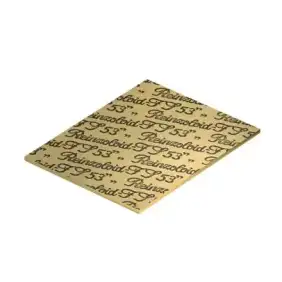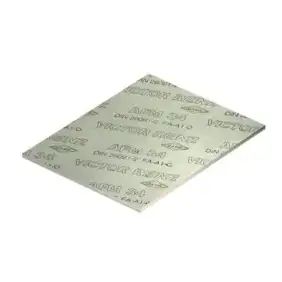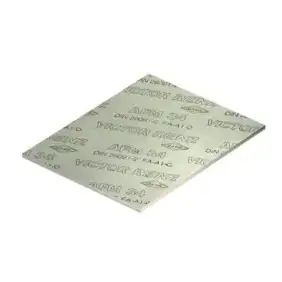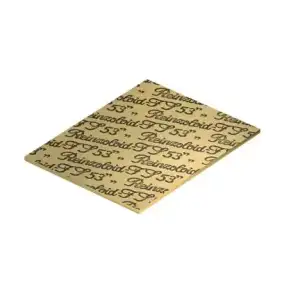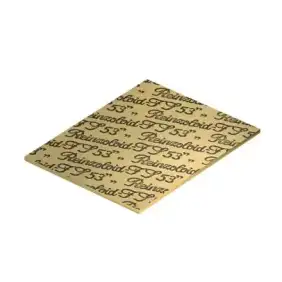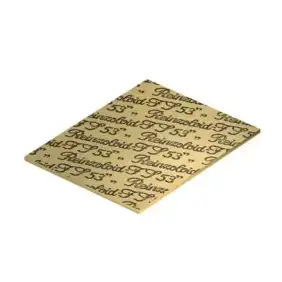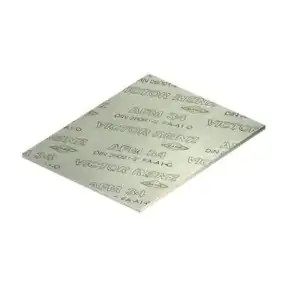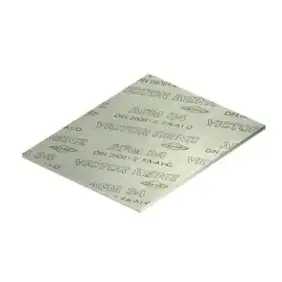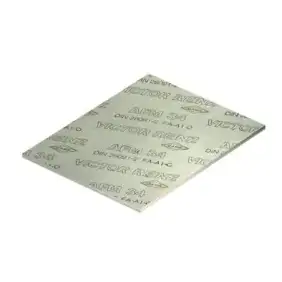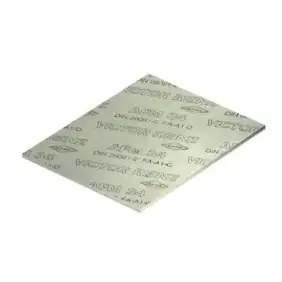Gasket sheet
Victor Reinz AFM 34 Gasket Sheet 3.0mm
Victor Reinz AFM 34 Gasket Sheet 1.5mm
Victor Reinz Reinzoloid FS53 Gasket Paper 2.0mm
Victor Reinz Reinzoloid FS53 Gasket Paper 0.3mm
Victor Reinz Reinzoloid FS53 Gasket Paper 1.0mm
Victor Reinz AFM 34 Gasket Sheet 4.0mm
Victor Reinz AFM 34 Gasket Sheet 0.5mm
Victor Reinz AFM 34 Gasket Sheet 1.0mm
Victor Reinz Reinzoloid FS53 Gasket Paper 0.5mm
Victor Reinz Reinzoloid FS53 Gasket Paper 0.75mm
Victor Reinz AFM 34 Gasket Sheet 0.75mm
Types in Stock We have two leading types of gasket paper in stock: Victor Reinz AFM 34 and Victor Reinz ReinZoloid FS53. Each type has unique properties that make it suitable for different applications.
Victor Reinz AFM 34:
Victor Reinz AFM 34 is an asbestos-free gasket material composed of aramid fibers, inorganic fillers, and high-quality elastomers. This material offers superior performance in various environments, especially where durability and resistance to extreme conditions are required.- Temperature Resistance: Suitable for continuous use at temperatures up to 250°C and short-term peaks up to 400°C. For steam applications, the material is suitable up to 200°C, and with a metal inner ring up to 220°C.
- Pressure Resistance: Can withstand working pressures up to 150 bar, making it ideal for high-pressure applications. AFM 34 is perfect for installations where high pressure and temperature are constant factors.
- Chemical Resistance: Excellent resistance to oils, fuels, water, gases, and various industrial chemicals, making the material suitable for a wide range of industrial processes.
Victor Reinz ReinZoloid FS53:
ReinZoloid FS53 is an economical gasket material based on glue-impregnated cellulose fibers. It offers a cost-effective solution for a variety of applications, especially where economical production is important.- Resistance to Oils and Fuels: Suitable for use in transmissions, carburetors, and pumps, where seals with fuels and oils are required.
- Temperature Resistance: Suitable for use at temperatures up to 120°C, making it a suitable choice for environments with light to moderate thermal loads.
- Pressure Resistance: Up to a maximum of 10 bar, ideal for applications where the pressure remains within these parameters.
Essential Tools for Making Custom Gaskets Creating your own gaskets offers the possibility to craft custom solutions that perfectly meet your specific requirements. Here’s a guide to the process and the materials needed to make your own gaskets:
- Cutting Tools: Use sharp cutting tools like utility knives or scissors for precise cutouts. Special tools such as hole punches or gasket cutters can help achieve accurate results, especially with complex designs.
- Measuring Instruments: Ensure you use accurate measuring instruments such as calipers or rulers to correctly measure your materials. This is crucial for ensuring the correct fit and effectiveness of the gasket.
- Templates or Stencils: For complex shapes, templates or stencils are handy to ensure consistency and precision when cutting. These can be self-made or purchased from a supplier, depending on your specific requirements.
- Marking Tools: Use pencils or markers to sketch your design on the gasket sheet before cutting. This helps minimize errors and ensures accurate execution of your design.
Process of Making Custom Gaskets
- Design and Preparation: Start by designing the gasket according to the specific requirements of your application. Use technical drawings and specifications to create an accurate design.
- Material Selection: Choose the right gasket material based on the requirements of your application, such as temperature, pressure, and chemical resistance.
- Measuring and Marking: Measure the exact dimensions of the part for which the gasket is intended and transfer these measurements onto the gasket sheet using marking tools.
- Cutting: Carefully cut the gasket using your chosen cutting tools. Ensure you work slowly and precisely to guarantee an accurate fit.
- Testing and Adjusting: Place the gasket in the correct location and test the fit and functionality. If necessary, make small adjustments to ensure the gasket seals well and functions effectively.
- Installation: Install the gasket in its final location and ensure it is properly tightened to prevent leaks. Use glue or sealant for additional securing if needed.
Alternative Formats and Materials In addition to our standard products, we also offer alternative sizes and materials, such as those from Klinger and Gambit, on request. These materials can be custom-made according to your specific requirements, allowing us to offer you a wider range of applications. This enables you to choose from a broad selection of materials tailored to specific conditions and requirements.
Conclusion With our standard gasket sheets, you have the freedom and flexibility to create custom gaskets that perfectly match your specific needs. Whether you choose the high performance of Victor Reinz AFM 34 or the economic advantages of ReinZoloid FS53, we are ready to provide you with the best materials and support. Our products are designed to meet the highest standards of quality and reliability, ensuring excellent performance in any application.
Making your own gaskets can not only be cost-effective but also allows you to tailor your production process to specific requirements and conditions. By keeping control over the design and production, you can achieve the flexibility and precision needed for your unique applications.
Contact us for more information or to place your order. We are committed to delivering quality and reliability, regardless of the scale or complexity of your project. Our team of experts is ready to advise and support you in choosing the right materials and tools for your specific needs. With our extensive range and flexible service, you can rely on the best solutions for your sealing challenges.

